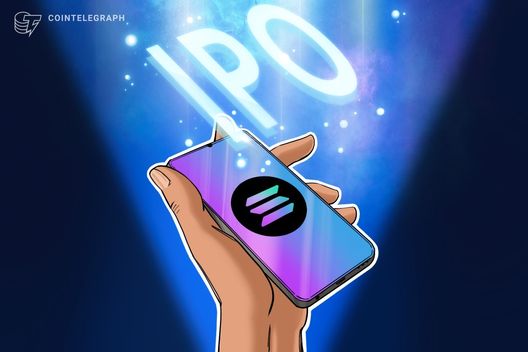The Hedera HBAR token experienced a tumultuous trading period between September 10 and 11, marked by notable price swings within a tight range of just 5%, fluctuating between $0.23 and $0.24. The session began with a drop to the $0.23 support level, but a significant rebound followed as trading volumes increased unexpectedly. Daily trading volumes typically settled around 35.4 million; however, by midday on September 11, this surged to an impressive 156.1 million as institutional investors showed heightened interest in HBAR, driving its price back toward the $0.24 resistance level.
Despite this upward momentum, HBAR struggled to maintain its upward trajectory, facing substantial selling pressure at the $0.24 threshold. This rejection underscored the importance of the $0.23 support level while also emphasizing $0.24 as a critical point for any potential price gains. Market analysts noted that if HBAR manages to close above this resistance, it could pave the way for a remarkable 25% increase towards the $0.25 target. Conversely, failing to overcome this barrier risks keeping the token range-bound, oscillating within the $0.21–$0.23 corridor.
“The surge in trading activity coincided with notable regulatory developments.”
Adding to the intrigue, the spike in trading activity arrived alongside Grayscale’s recent filing with the U.S. Securities and Exchange Commission (SEC) on September 9. The proposal seeks to convert its Hedera HBAR Trust into an exchange-traded fund (ETF), mirroring similar filings for Bitcoin Cash and Litecoin. The SEC is due to make a decision by November 12, potentially shaping HBAR’s prospects for institutional adoption in the upcoming months.
The ETF filing has ignited interest from traditional asset managers, eager for broader engagement with digital assets. As regulatory clarity looms on the horizon, HBAR’s price movements depict a vigorous interplay between bullish institutional demand and prevailing technical barriers. Investors are keenly observing whether the SEC’s forthcoming decision might serve as the catalyst HBAR needs to breach resistance levels and cement a foothold in higher trading ranges.

Hedera HBAR Token Volatility and Market Dynamics
The recent fluctuations in Hedera’s HBAR token hold significant implications for investors and market participants.
- Volatile Trading Period:
- HBAR experienced a 23-hour stretch of volatility between $0.23 and $0.24, indicating market uncertainty.
- The token formed a narrow trading range, showing constrained price movement.
- Significant Support and Resistance Levels:
- Strong support at $0.23 has proven resilient, suggesting a foundation for potential future growth.
- Resistance at $0.24 has acted as a barrier, preventing HBAR from gaining higher ground.
- Analysts watch for a close above $0.24 that might enable a rally toward a target of $0.25.
- Surge in Trading Volume:
- Average daily trading volume of 35.4 million surged to 156.1 million, indicating increased investor interest.
- Institutional flows have been confirmed, reflecting a shift in market dynamics towards greater institutional involvement.
- Regulatory Developments:
- Grayscale’s application to convert its HBAR Trust into an ETF heightens market anticipation and interest from institutional players.
- The upcoming SEC decision on Nasdaq listing by November 12 could significantly impact HBAR’s future price movements and adoption.
- Technical Indicators:
- The specified trading range highlights the importance of monitoring resistance and support levels for trading strategies.
- Rejection patterns and volume spikes signal high volatility, necessitating careful risk assessment for traders.
The analysis of HBAR’s price action emphasizes the balancing act between bullish institutional interest and resistance challenges that could directly influence investor strategies and market positioning.
Comparative Analysis of HBAR’s Volatility and ETF Prospects
Hedera’s HBAR token has navigated a turbulent period, characterized by a tight trading range and significant fluctuations driven largely by institutional activity and upcoming regulatory decisions. The recent events surrounding HBAR’s price action present both competitive advantages and disadvantages when stacked against broader market trends in cryptocurrency.
While HBAR’s 23-hour stretch exhibited a 5% trading range, it parallels similar tokens like Bitcoin Cash and Litecoin, which also seek to enhance their positions through ETF filings. The movement around HBAR indicates a growing institutional interest, especially with Grayscale’s recent application to convert its HBAR Trust into an ETF. This could potentially attract traditional asset managers and offer HBAR a unique edge as it strives to solidify its market presence. However, the struggle at the $0.24 resistance level indicates a significant barrier that could limit upward momentum, unlike its competitors who may be experiencing less friction at critical price points.
The heavy trading volume accompanying HBAR’s recent recovery suggests a strong sentiment shift; yet, this is juxtaposed against the reality of its price stagnation below crucial resistance. If the SEC’s decision on Grayscale’s ETF application leans favorably, it could ignite a surge in demand and establish HBAR as a leading player within the digital asset space. Conversely, a rejection could dampen investor confidence, creating potential setbacks for HBAR’s institutional adoption while bolstering alternative tokens that navigate similar regulatory landscapes with fewer obstacles.
Market watchers and potential investors need to recognize the implications of these dynamics. Traditional investors seeking to diversify into digital assets may find HBAR an attractive option if regulatory clarity emerges positively, enhancing its appeal in a growing market. However, those already invested might face challenges if the anticipated breakout fails, leading them to reassess their strategies in favor of tokens exhibiting steadier gains. In summary, HBAR’s outlook is intricately linked to external factors, setting the stage for both opportunities and hurdles in the race for institutional recognition.















